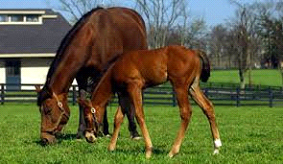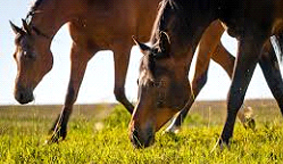WHY A ROPE HALTER?
- Susan Warnock
- Nov 30, 2020
- 4 min read
Updated: Dec 11, 2021
by Susan Warnock | Feb 5, 2016 | Education

Halters are universal, the most widely used piece of equipment in any horse owners tack room. Halters are used for everything, from catching horses to leading and tying, and in some cases even riding. Therefore that makes this crucial piece of gear paramount in communication between you and your horse.
Since we are beginning to realize that every time we are around and interacting with our horses we are training them, we begin to see the halter as more than something we put on the horse’s head to drag him from point A to point B, but a training tool that is helping us to set the stage for a solid foundation to develop between our horses and ourselves that we’ll enjoy for years to come. Visit us to learn more.
Personally I prefer a quality rope halter to anything else, and you won’t find anything other than rope halters in my tack room. Some of my rope halters I’ve had for 10+ years and have been used on countless horses, now that’s quality!
SO WHY A ROPE HALTER?
Lightness. Obviously anyone on a quest for better horsemanship is hoping to achieve lightness whether they realize this directly or indirectly. We want our horses to be responsive, respectful, and a joy to be around and ride. Lightness begins on the ground. The rope halter is an important tool in achieving this as it doesn’t allow the horse to lean and push against the halter the way it sometimes would against a 1” flat webbed halter. The rope halter makes this unwanted behavior somewhat uncomfortable which is what we’re after.

There is a wide variety of rope halters on the market some of which have additional knots tied across the nose piece of the halter coined in some cases “pressure point knots.” I don’t prefer these halters as much as I prefer a simple, quality one, as to me it’s not about pressure points on the horse’s face as much as it’s about the whole picture in obtaining good horsemanship.
Durability. A quality rope halter has no hardware. If there’s no hardware involved then there’s no hardware to break. I’m sure you’re quickly getting the picture. The horse learns to respect the rope halter and give to it. I don’t know that there’s anything more frustrating (or dangerous) than numerous broken halters at your feet and a horse that hasn’t learned to stand tied.

Simplicity. I love the simplicity the rope halter offers me as a training tool on the ground and in the saddle.
THINGS TO KEEP IN MIND…
TURNOUT...
Never turn your horse out to pasture with any type of halter on his head. This could be potentially very dangerous. If your horse is hard to catch, leaving a halter on him will not solve the problem. Instead, educate yourself on how to resolve this issue beginning in a controlled environment (a round corral, work pen, or inside a run off the barn).
SIZING...
Sizing. Make sure the rope halter is the right fit. Just as the right shoes must fit, so does the right halter, as poor fit will greatly interfere with the communication between you and your horse. A sizing chart should be available wherever you order your rope halter, usually fit by breed. Example: Miniature Horses, Pony/Cob, Arabian, Average Horse, Warmbloods, and Drafts. Once the rope halter is tied, I like the throat latch knot to be just flush with the throat. The cheek pieces should be just long enough that the noseband of the halter sits right at the tips of the horse’s cheekbones but not long enough to be fitting down along the horse’s nostril where not only is it a sloppy fit but will be interfering with the horse’s airways.

TYING...
How to tie your rope halter. There is defiantly a right way and a wrong way to tie the rope halter. If the rope halter is tied incorrectly it can work its way loose or be next to impossible to work free if the halter is pulled tight. If tied incorrectly the tail end piece can also fall into the horse’s face and eye, a bothersome and unwelcome irritation.
STORAGE...
How to store your rope halter. Everything I do around the barn is about efficiency and ease. I store my rope halter where I can grab it from its hanger and have it ready in my hand to catch a horse in a simple three step process.

BRAND...
Brand. I have been very pleased with the Double Diamond #124 rope halter designed and used by Buck Brannaman. This halter is durable yet soft enough to be comfortable and a perfect diameter in schooling horses toward lightness. If kept out of the weather, these halters will offer use for a number of years.

Lead Rope- I prefer either a 12ft or 14ft lead rope to go along with my halter for general groundwork and riding, ( nothing shorter) as this gives you plenty of space for drift during ground exercises. My lead ropes don’t have hardware on them either and are made with quality material such as tree line rope or double braid yacht rope that are substantial enough to carry life from your hand down the rope to the horse, a very important component in communication.
So if you’ve been wondering why a rope halter, well there are actually many reasons.
© The Horse Match Maker
















Commenti